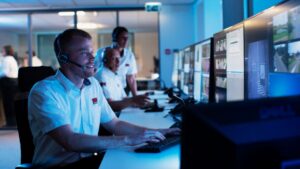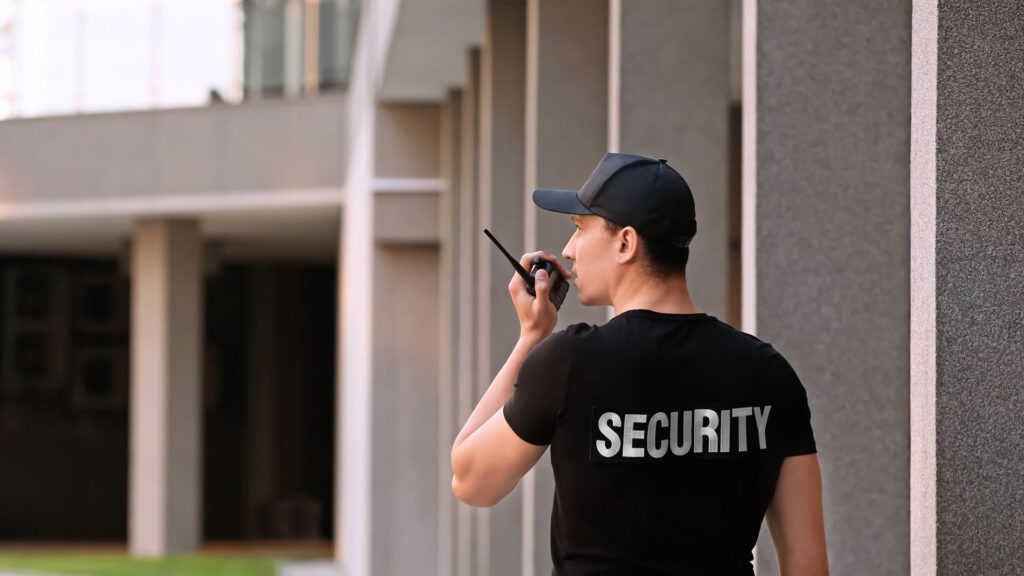Tasks of facility security departments
Tasks of Facility Security Departments

The tasks of security departments in facilities vary depending on the type of facility, as the nature of the facility’s operations determines the level and scope of its security department.
Security departments in social facilities may be smaller and less complex than those in economic and political facilities. The main tasks of security departments in facilities include:
- – Ensuring security.
– Securing the facility’s buildings.
– Protecting the facility’s sensitive information.
– Ensuring the safety of employees working in the facility.
– Issuing safety and security regulations within the facility.
– Implementing and monitoring security and safety procedures.
– Controlling and managing entry and exit points to and from the facility.
– Preventing economic losses (theft, embezzlement, damages).
– Investigating security and safety incidents.
– Reviewing and adjusting safety procedures after each incident.
– Conducting investigations, inspections, and routine or special security patrols.
– Ensuring the safety and functionality of all emergency exits, equipment, and devices, and their compliance with safety regulations.
– Training and guiding security personnel and employees on security and safety procedures.
– Ensuring all employees comply with security and safety procedures.
– Protecting the facility from risks.
– Preparing an emergency response plan for fire and evacuation, and assigning roles to the crisis management team.
– Enforcing and monitoring traffic safety within the facility.
– Coordinating and cooperating with local official authorities regarding security and safety matters (civil defense, emergency services, ambulance services, criminal investigation departments, etc.).
Preventive Security Measures and Emergency Plans
Every facility must prepare and ensure its security against risks according to its organizational capabilities and allocated protection budget,
with a focus on its primary objectives. Security measures should neither be too weak to ensure adequate protection nor excessive to the extent that they affect the workflow or purpose of the facility.
Each facility should have preventive security measures against potential risks, forming an integrated security plan. The key components of such a plan include:
- 1. Appointing a security team capable of facing challenges, consisting of:
– Security Director: The primary person responsible for security, designing strategies, procedures, and systems.
– Security Officer: Ensures the implementation of security and occupational safety regulations, oversees general security, ensures that security personnel are fulfilling their duties (such as controlling exits and entrances, preventing risks, conducting routine patrols), and regularly updates the staff’s skills in first aid, fire control, traffic management, and security procedures.
– Security Staff and Supervisors2. Equipping the security team with the necessary devices and equipment to perform their duties efficiently.
3. Providing appropriate training for security personnel and staff to perform their security tasks.
4. Preparing a suitable industrial security plan and providing the necessary equipment.
5. Regularly training all employees on the evacuation plan and ensuring they are fully familiar with it.
6. Forming specialized teams for evacuation, inspection, rescue, and firefighting, composed of security personnel and trained employees.
7. Studying the facility’s environment, including:
– The geographical location and surrounding natural conditions.
– Nearby facilities and the nature of their activities.
– Familiarizing with employees, workers, and frequent visitors or clients.
– Controlling traffic and organizing vehicle and personnel movement.
– Classifying and cataloging fire prevention, first aid, and theft prevention tools.
– Inspecting electrical and mechanical systems.8. Conducting foot and vehicle patrols inside and around the facility, combining plainclothes personnel and uniformed guards to monitor security posts, equipped with necessary tools.
9. Familiarizing personnel with the rules of firearm use (according to the facility’s needs and objectives).
10. Conducting thorough background checks on employees before hiring them.
11. Assigning specific uniforms for work and providing employees with identification badges.
12. Designing facility gates to meet security and safety needs, with multiple entry points where necessary.
13. Implementing an inventory and tool control system, especially for smaller items (stock control).
14. Encouraging and rewarding employees for reporting thefts or security breaches.
15. Intensifying security in areas prone to thefts or security breaches (weak points).
16. Raising awareness and issuing internal monthly bulletins to inform and warn employees.
17. Defining the scope of security supervision for each position, including tasks for shift supervisors and security officers.
18. Regularly reviewing and correcting security and safety procedures.
Modern technology has greatly assisted in facility access control, including airports and ports, with the use of electronic gates and magnetic cards for employees and visitors.
Different card colors designate the areas an individual is authorized to access. Additionally, wired and wireless communication devices ensure quick contact and support in emergencies. Closed-circuit television (CCTV) systems have also improved efficiency and control with fewer personnel,
alongside modern alarm systems and loudspeakers, all contributing to the success of preventive plans and reducing human errors.



